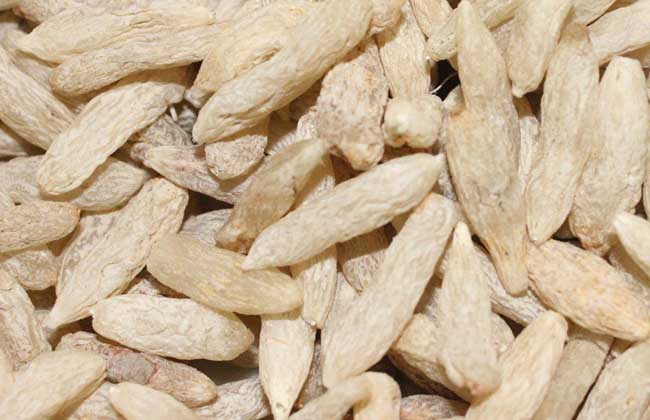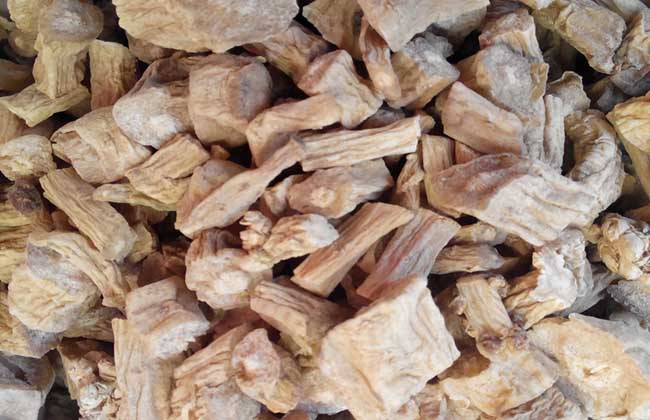The market price of ginseng

Ginseng is known as the "king of herbs". As a traditional Chinese medicine, it has been used for thousands of years. It is a famous tonic for strong strength. It is suitable for regulating blood pressure, restoring heart function, neurasthenia and physical weakness. It also has the effects of expectorant, stomach-strengthening, diuresis and excitement. The market price has been high all the time. Let's take a look at the price and identification method of ginseng.
The market price of ginseng
The best ginseng is about 0.5 yuan per gram, that is, 250 yuan per jin, general ginseng is about 2 yuan per gram, that is, 1000 yuan per jin, good ginseng is more than 8 yuan per gram, that is, more than 4000 yuan per jin, the best ginseng is usually not measured by money, 100000, 1 million.
Classification of ginseng
1. First-class ginseng: dry goods, pure ginseng root, main root thick and short, branch root separated, five-shaped all-American (rash, taro, grain, body, beard contrast), round gourd, plump in the middle of taro, shaped like jujube kernel, tight and thin skin, tight and deep transverse grain of main root, clear and long beard root, tough, obvious pearl pimples, white or yellow-white teeth on the surface, white cross section, sweet and slightly bitter taste, each weighing more than 100g. The taro cap does not exceed 25% of the weight of the main root, and there are no scars, impurities, worms and mildew.
2. Second-class ginseng: dry goods, pure ginseng root, main root thick and short, branch root separated, five-shaped all-American (rash, taro, grain, body, beard contrast), round gourd, taro middle plump, shaped like jujube core, tight and thin skin, tight and deep transverse grain of main root, clear and long beard root, tough, obvious pearl pimple, white or yellow-white surface teeth, white cross section, sweet and slightly bitter taste, each weighing more than 55g. The taro cap does not exceed 25% of the weight of the main root, and there are no scars, impurities, worms and mildew.
3. Third-level ginseng: dry goods, pure ginseng root, main root thick and short, branch root separated, five-shaped all-American (rash, taro, grain, body, beard contrast), round gourd, taro middle plump, shaped like jujube kernel, tight and thin skin, tight and deep transverse grain of main root, clear and long beard root, tough, obvious pearl pimples, white or yellow-white teeth on the surface, white cross section, sweet taste and slightly bitter taste, each weighing more than 32.5g. The taro cap does not exceed 25% of the weight of the main root, and there are no scars, impurities, worms and mildew.
Identification of true and false ginseng
1. Mountain ginseng: the main root of mountain ginseng is as long or short as the rhizome, the length is 3-10 cm, the shape is herringbone, cylindrical or diamond, the surface color is grayish yellow, with longitudinal lines, there are tight and deep circular horizontal lines at the upper end, the whisker root is slender, clear and uncluttered, and there are 2 branches in the lower part, which can be seen with obvious verrucous protuberances, commonly known as "pearl bumps", the slender and long rhizome, and its upper part has dense stem marks. Its adventitious root is relatively thick, similar to the jujube kernel.
2. Garden ginseng: the main root of Ginseng is cylindrical or spindle-shaped, 1-2 cm in diameter and 3-15 cm in length, its surface is yellow, obvious longitudinal wrinkles and shallow intermittent transverse lines can be seen in the upper or all, and there are 2-3 branches in the lower part, and there are many thin and long fibrous roots, which are often inconspicuous verrucous protuberances on the fibrous root, and the rhizome (Reed head) is 0.3-1.5 cm in diameter. The length is 1-4 cm, clonic and curved, with adventitious roots and concave sparse stem scars, the skin has yellowish brown punctate resin channels and radial fissures, the texture is hard, it is truncated, and its cross section is yellowish white and powdery. The ring pattern of its cambium is brownish yellow, the aroma is specific, and the taste is slightly bitter and sweet.
3. Burdock root: the shape of burdock root is oblong or spindle-shaped, the surface is brown, the root is less branched, with obvious longitudinal wrinkles and longitudinal grooves, and the skin is yellowish brown. Tough, truncated, its cross section is translucent, the forming layer ring is more obvious, its wood is yellow and white, the radial texture can be seen, and the gas is slightly bitter.
4. Dipsacus root: the shape of Dipsacus root is long cylindrical, branched, gray-yellow surface, fine longitudinal lines and transverse lenticels, and fibrous roots and fibrous roots, hard, yellow-white cross-section, fibrous, often with large fissures, wood with radial texture, sometimes hollow, slightly fragrant, bitter taste.
5. North China scallions root: the root of North China scallions is long cylindrical, its surface is yellowish brown, with 1-2 branches or unbranched. The length is 30-40 cm, the head near the root has a transverse ring, the middle and lower part has obvious longitudinal wrinkles and grooves, the shape is twisted, tough, horny, after truncation, the cross-sectional skin is narrow, yellowish brown, the cambium ring is brown, the wood is broad, yellowish-white, with radial texture, slight gas, sweet taste.
6. Yuanshen Shuizi forgery: the main root of Yuanshen Shuizi is long, straight, gray-yellow on the surface, about as long as the rhizome, 4 cm in length, more intermittent rings can be seen at the upper end, obvious longitudinal wrinkles can be seen at the lower end, the whisker root is less, short and brittle, there are 3 branches, the verrucous protuberance of the branch root is not obvious, and there are sparse Reed bowls on the Reed head, which are arranged alternately, and have 3 cis, if you take a closer look. It can be seen that the main root, Reed head, branch root and fibrous root are forged for processing and bonding, and are dispersed with blisters.
Related
- A course of planting techniques and methods on how to grow carrots
- How to plant the latest tulips?
- Is it better to pick tea in the morning or in the afternoon? When is the best time for tea to be picked? what is the third or fifth tea?
- Launch Yuanxiao Happy combination Haocha + Tea Yuan healthy Taste
- Penghu Tourism "Fireworks 20 Parade with You"
- 2022 West Lake Happiness holds "Digital Revitalization Voucher" and draws iphone13 and laptop.
- Banqiao Fuzhou social houses are designed to change start-up combined with police elimination to create a safe and livable environment
- The convenient measure of "mechanical weeding" in Xinbei has been abused and the Agriculture Bureau has imposed heavy penalties on the illegal land consolidation.
- Changgeng University Joins Hands with Four Memory Factories to Rescue Memory Talent Shortage
- The list of Taiwan's top 100 MVP managers is listed by the Director-General of the Farmers' Association of Sanxia District.



